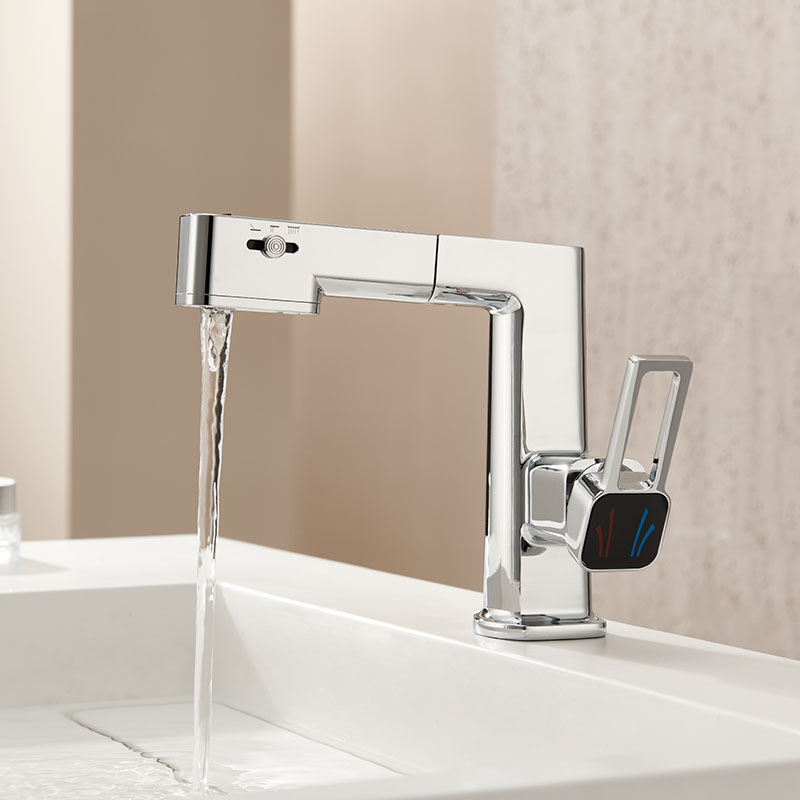The Impact And Response Of Updated Policies And Regulations in The Sanitary Ware Industry on Corporate Compliance Operations
Against the backdrop of global carbon neutrality goals and trade barriers, the policies and regulations of the sanitary ware industry are undergoing systematic changes. The EU Carbon Border Adjustment Mechanism, the US AB 1953 Lead Content Restriction Act, and China's "Building Materials Industry Carbon Peak Implementation Plan" and other policies have been intensively introduced, which put forward higher requirements for the material selection, production process, and export compliance of enterprises.
1. Three core impacts of updated policies and regulations
The cost of material compliance has increased sharply
Heavy metal restrictions and upgraded environmental protection standards directly push up production costs. For example, the US AB 1953 Act reduces the lead content threshold of faucets from 0.25% to 0.1%, forcing companies to switch to high-purity lead-free copper alloys, increasing raw material costs by 15%-20%. The EU REACH regulation adds 24 new controlled chemicals, and sanitary ware paints need to be replaced with water-based formulas. The cost of transforming a single spray line exceeds 2 million yuan.
Carbon tariffs reshape export competitiveness
In 2023, the EU will include ceramic sanitary ware products in the CBAM and impose taxes on imported products based on embodied carbon emissions. Take a Chinese ceramic company as an example. If a traditional gas kiln is used to produce toilets, an additional 8% tariff will be paid. However, companies using green hydrogen kilns are exempt from taxation, which has significant cost advantages.
Energy efficiency and water conservation standards upgrade
ISO 31600-2023 requires that the standby power consumption of smart toilets be reduced from 1.5W to 0.5W, and the driver circuit board needs to be redesigned; ASME A112.19.14 reduces the upper limit of shower flow from 9L/min to 7.6L/min, and companies need to invest in air injection technology to optimize water flow efficiency. Products that do not meet the standards will face the risk of being banned from the market.

2. Enterprise response strategy: technology, management and ecological synergy
Green materials and process innovation
Recycled material substitution: bathroom accessories made of recycled aluminum are certified by EPD environmental declaration, and the premium rate in the European and American markets is increased by 15%;
Low-carbon production transformation: the kiln fuel is changed from natural gas to green hydrogen, carbon emissions are reduced by 85%, and the photovoltaic roof covers 50% of the electricity demand, achieving the goal of a zero-carbon factory by 2030.
Digital compliance management system
Blockchain traceability: record the full process data from copper mining, smelting to finished products, automatically generate carbon emission reports required by CBAM, and shorten customs clearance time by 30%;
AI regulatory warning platform: real-time capture of the dynamics of 200+ regulatory agencies around the world, push policy interpretations and compliance lists. For example, a company responded to the EU's new RoHS directive 6 months in advance through this system, avoiding a loss of 5 million yuan in orders.
Supply chain deep compliance collaboration
Supplier ESG grading: incorporate environmental performance into procurement scores, eliminate high-pollution electroplating plants, and reduce the carbon intensity of the supply chain by 25% within two years;
Nearshore manufacturing layout: set up a factory in Mexico to supply the North American market, use local recycled copper materials, shorten the logistics cycle from 60 days to 7 days, and avoid the 25% US import tariff.
3. Challenges and future breakthrough directions
Transformation dilemma of small and medium-sized enterprises
Countermeasures: Industry associations take the lead in formulating group standards, share green technology patent pools, and lower the threshold for technical transformation.
Imbalance between certification costs and market returns
Breakthrough: Apply for green subsidies with the joint government to cover 50% of certification costs; hedge costs through carbon asset trading
New opportunities for technology integration
Intelligent compliance tools: Develop a multilingual compliance assistant based on GPT-4, automatically generate export declaration documents, and reduce manual review by 70%;
Zero-carbon product line: Launch "zero-carbon smart toilet", each product is marked with the carbon footprint of the entire life cycle, and the government procurement winning rate has increased by 40%.
4. Industry trends: from passive compliance to value creation
Carbon tariff exemption products: Toilets produced by green hydrogen kilns can be purchased preferentially by EU importers;
ESG financing advantages: For companies that have obtained TÜV zero-carbon certification, the green bond financing interest rate is as low as 3%, saving 2 percentage points compared to traditional loans;
Consumer premium payment: The post-85s group is willing to pay 20% more for EPD-certified bathroom cabinets, and the environmental label directly drives sales growth.
Policy compliance in the bathroom industry has entered a new stage of "technology-driven, ecological synergy". Enterprises need to take green material substitution as a starting point and use digital tools as a lever to transform regulatory pressure into innovation power. In the future, compliance capabilities will become a core dimension of brand value - whoever can first achieve the trinity of "zero-carbon production + intelligent management + policy insights" will be able to gain the upper hand in the global trade changes.


